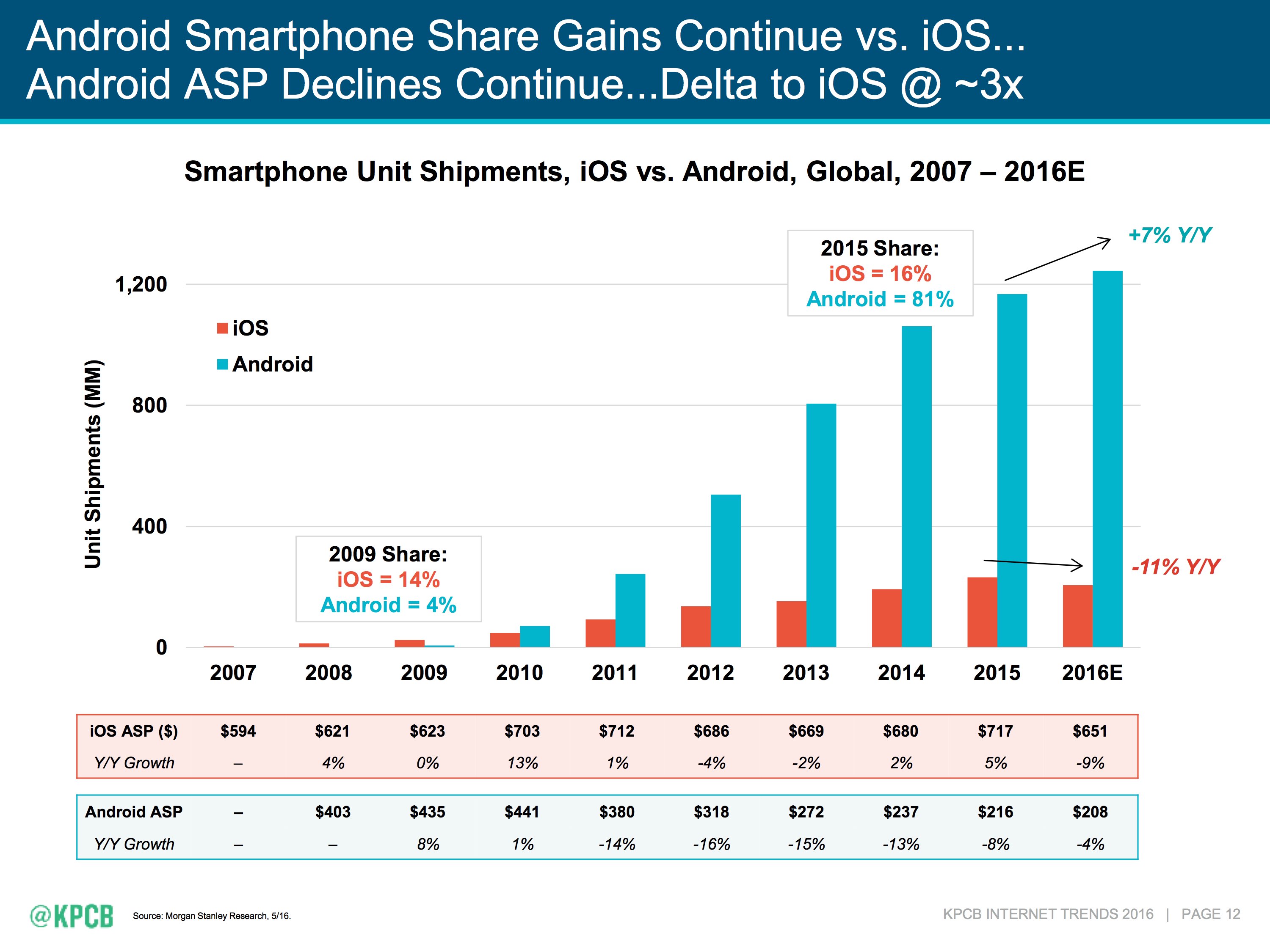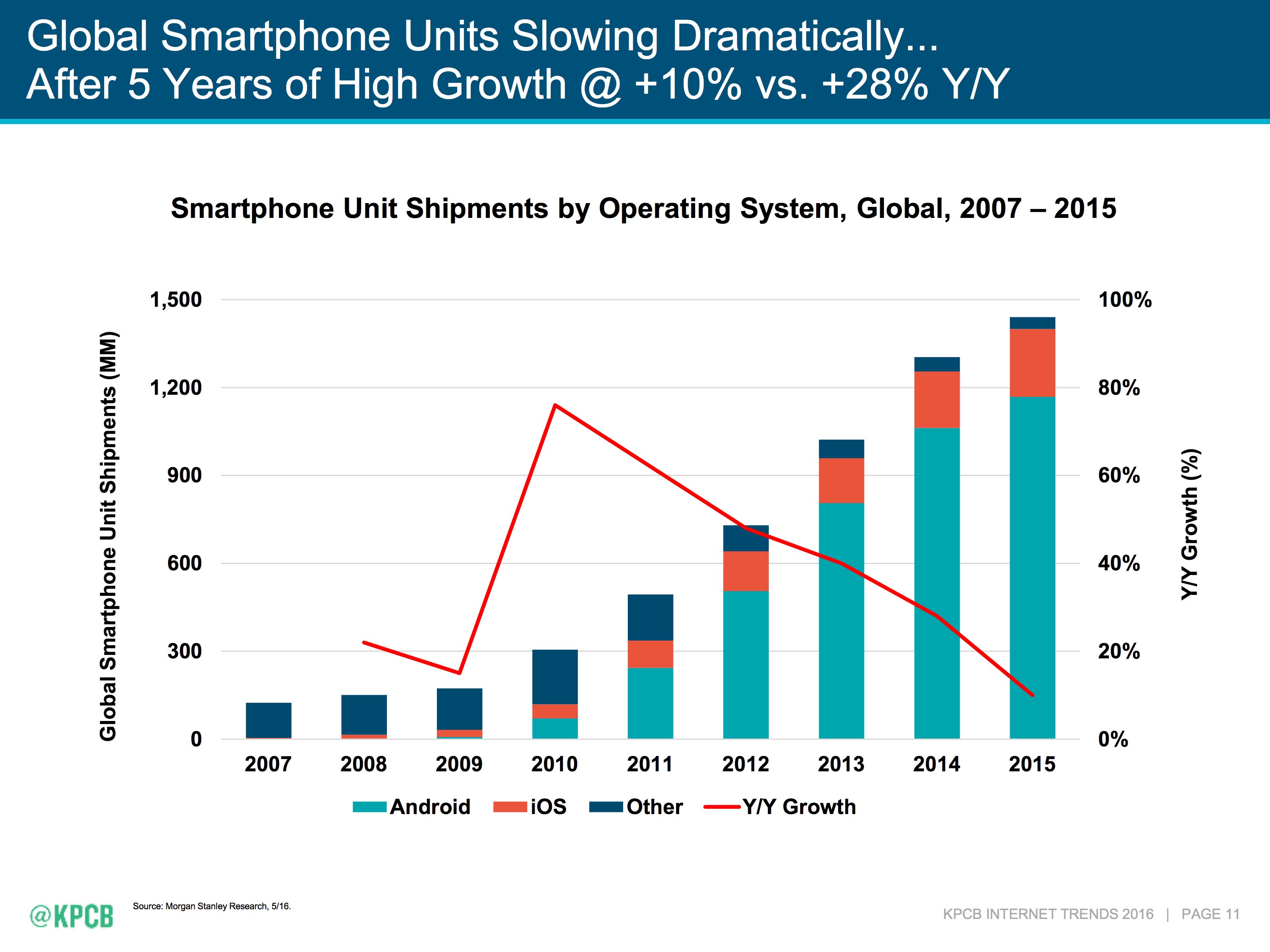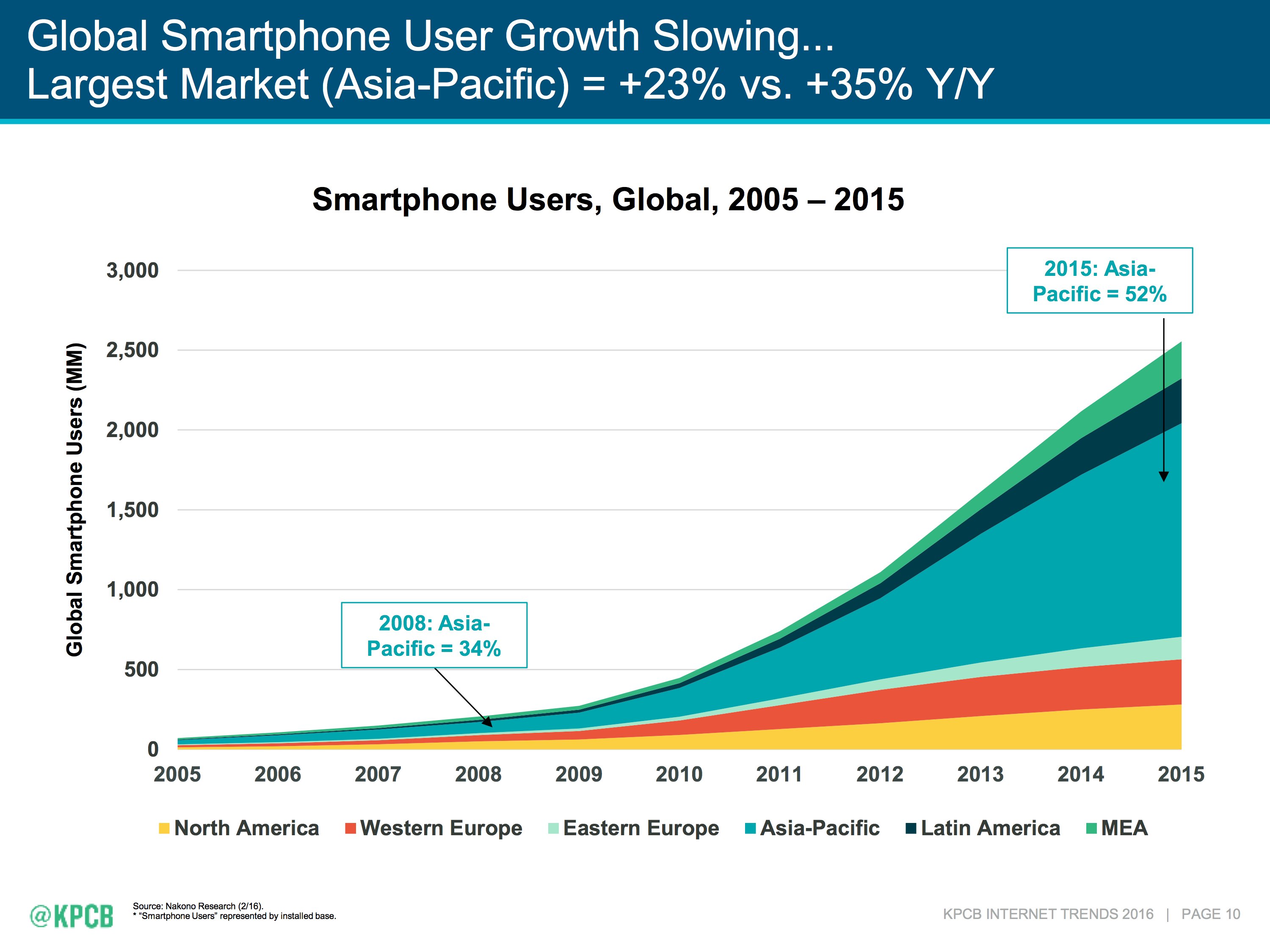Mary Meeker’s 2016 Internet Trends Report is a treasure trove of surveys and predictions on the global trends concerning our industry. I found out this morning that half of the searches will be either through images or speech by 2020 and that Siri was handling more than one billion requests per week through speech as of June 2015.
I’ve now compiled the report’s most interesting tidbits regarding Internet usage around the world, the iOS vs. Android battle and more.
iOS vs. Android
Android increased and iOS lost market share in 2015, despite a shrinking average selling price of Android phones. Over the past six years iOS has increased its market share by just two percentage points, while Android shot up from a four percent share in 2009 to a dominating 81 percent in 2015.
Pretty much everyone else (BlackBerry, Microsoft, etc.) is dead in the water. Meeker thinks Apple in 2016 will see an eleven percent drop in iOS device unit shipments while Android will climb another seven percent.
Android was able to grow so rapidly because it’s available on a bunch of devices in all shapes, sizes, colors and price points, from different hardware makers. Much of Android’s popularity is also owed to the fact that back in the day it was the closest approximation of the iPhone experience on non-Apple devices.
Tidbits from 2016 Internet Trends Report
Here are the most interesting observations from the report:
- Three billion of the seven billion people on the planet are now online, or 42 percent of the world’s population, but the global Internet adoption rate was flat year-over-year at nine percent
- India saw 40 percent year-over-year Internet user growth compared to 33 percent one year ago
- Of India’s 1.25 billion people, 277 million people are currently online
- India has now become the second-largest online population, after the United states and just behind China
- China and India collectively captured 52 percent of the global smartphone market in 2015
- Global smartphone sales grew just 10 percent in 2015 vs 28 percent in 2014, meaning everyone who wants a smartphone probably already has one
- Google and Facebook controlled 76 percent of the U.S. online advertising market, but advertisers are still spending more money on print than mobile
- Messaging space is dominated by Facebook and WeChat, but Meeker’s data excludes Apple’s iMessage because it’s not cross-platform
Wrapping it up
All in all, Meerkat concludes that year-over-year global smartphone user growth is slowing with 21 percent new users this year versus 31 percent last year. Global smartphone unit shipments are slowing at an alarming rate with just ten percent year-over-year growth in 2016 versus s8 percent last year.
Apple has already experienced this phenomenon when it announced the first decline in iPhone shipments since the handset’s 2007 introduction. Although it owns the premium segment of the smartphone market, that segment has dried up and the whole market has slowed considerably, putting a pricing pressure on the California firm.
What’s your take on these stats?
Source: Mary Meeker


